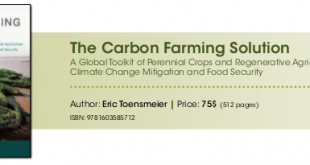
A book written by Stephen Emmott, a renowned British scientist, that can be defined as an anthropological essay of terror.
In the course of the first 150 pages, the author analyses the growth in human population, consumption habits and their ecological impact. He argues for a return to subsistence consumption, from foodstuffs to clothing, to drastically reduce CO2 emissions from goods transport and the consumption of water connected with the production of almost everything.
He goes as far as suggesting population controls although he doesn’t explain how. Without this, in 2050, the population will increase from its current 7 billion to 10 billion, reaching 28 billion by the end of the century.
In the final 50 pages, devoted to solutions, Stephen Emmott spreads panic because no decision will be effective, in his view. One by one, he destroys all the “environmentally friendly” solutions in a radical way.
That is, he only sees one response that is capable of saving us: artificial photosynthesis, something that doesn’t exist yet, nor is it known if it could possibly succeed. In his words “that could represent a potentially global energy solution”. When he adds that “only some laboratories in the world – such as the one where I work – are starting to tackle this issue”, one question immediately occurs to me: tendentious?
And, if it was viable, what quantities of energy or water would be necessary to achieve it? And what CO2 emissions would it generate?
 Eco123 Revista da Economia e Ecologia
Eco123 Revista da Economia e Ecologia



